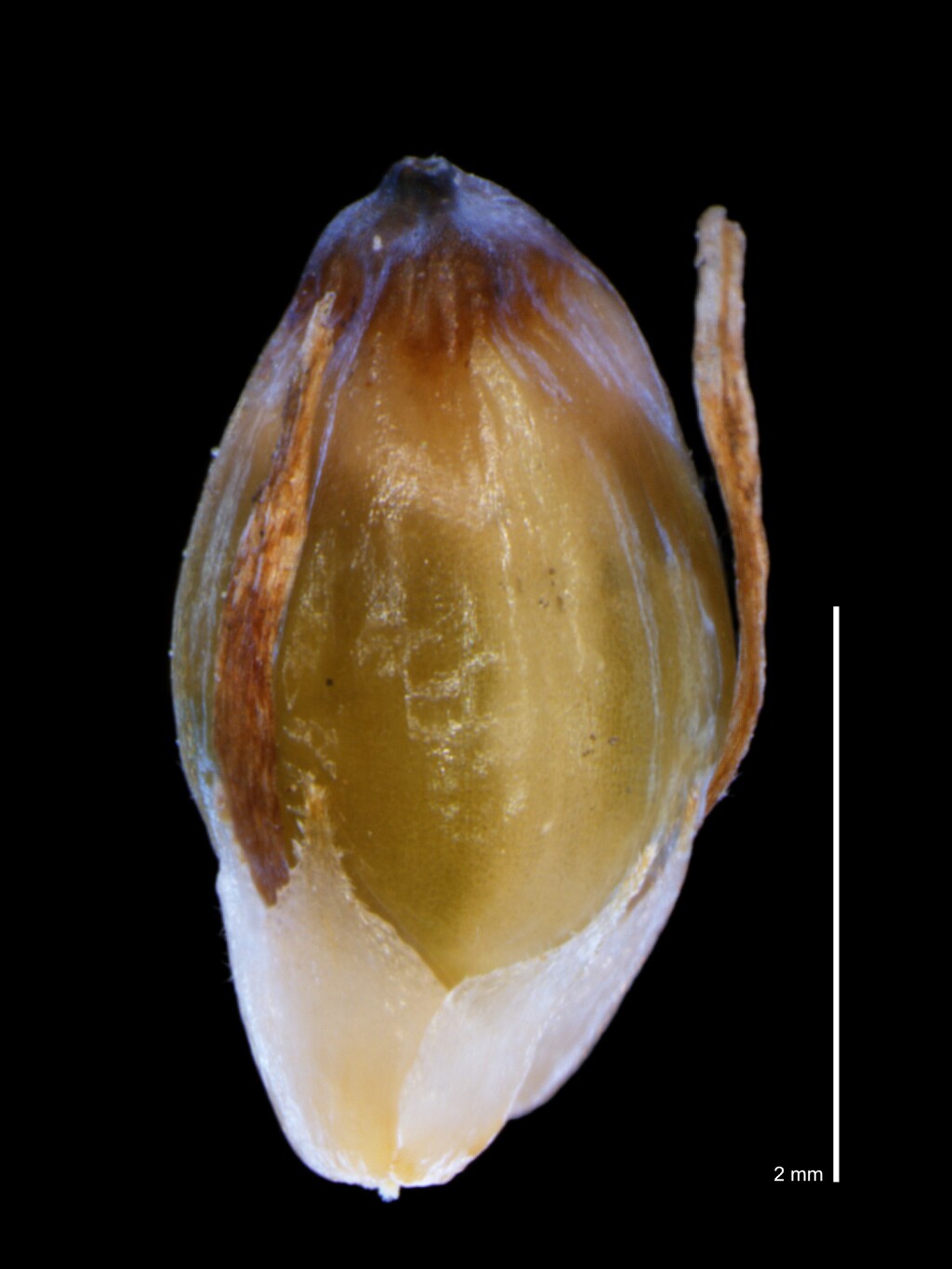Lepidosperma gladiatum
Labill. Coast Sword-sedgeClump-forming perennial with stout vertical rhizome. Culms rigid, erect, with central biconvex ridge and margins flat or concavo-convex, striate, glabrous, smooth, 45–100 cm high, 5–20 mm wide; margins smooth. Leaf-blades similar in form to culms but less strongly biconvex, as long as or exceeding culms, 8–16 mm wide; sheaths straw-coloured to dark yellow-brown or grey-brown basally, not viscid, shining. Inflorescence ovate or oblong in outline, erect, dense, 4–18 cm long, 3–7 cm diam.; involucral bract shorter than inflorescence. Spikelets numerous, clustered, 6–8 mm long; glumes 5–7, puberulous, red-brown, 3 or 4 lowest empty, c. one-half as long as fertile glumes, obtuse to broad-acute; fertile glumes 6–7 mm long, acute, mucronate; hypogynous scales 6, whitish to yellowish, from one-quarter to one-half length of nut. Nut narrow-ovoid, pale to dark brown, smooth or wrinkled, shining, 3.0–4.0 mm long, 1.5–2.0 mm diam. Flowers spring–summer.
GleP, Brid, VVP, GipP, OtP, WaP, EGL, WPro, OtR, Strz. Also WA, SA, NSW, Tas. Extending along most of the Victorian coastline, chiefly on sand-dunes, but also occasionally on sandstone or limestone headlands.
Wilson, K.L. (1994). Cyperaceae. In: Walsh, N.G.; Entwisle, T.J., Flora of Victoria Vol. 2, Ferns and Allied Plants, Conifers and Monocotyledons, pp. 238–356. Inkata Press, Melbourne.
 Spinning
Spinning


